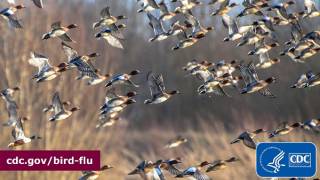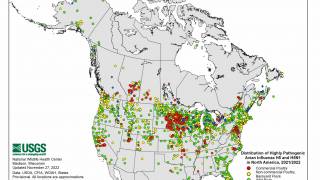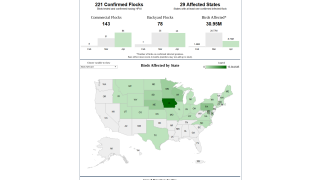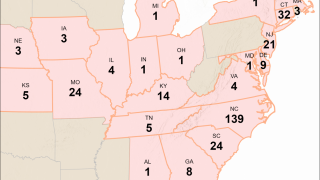Europe's Bird Flu Outbreak Raises Concerns
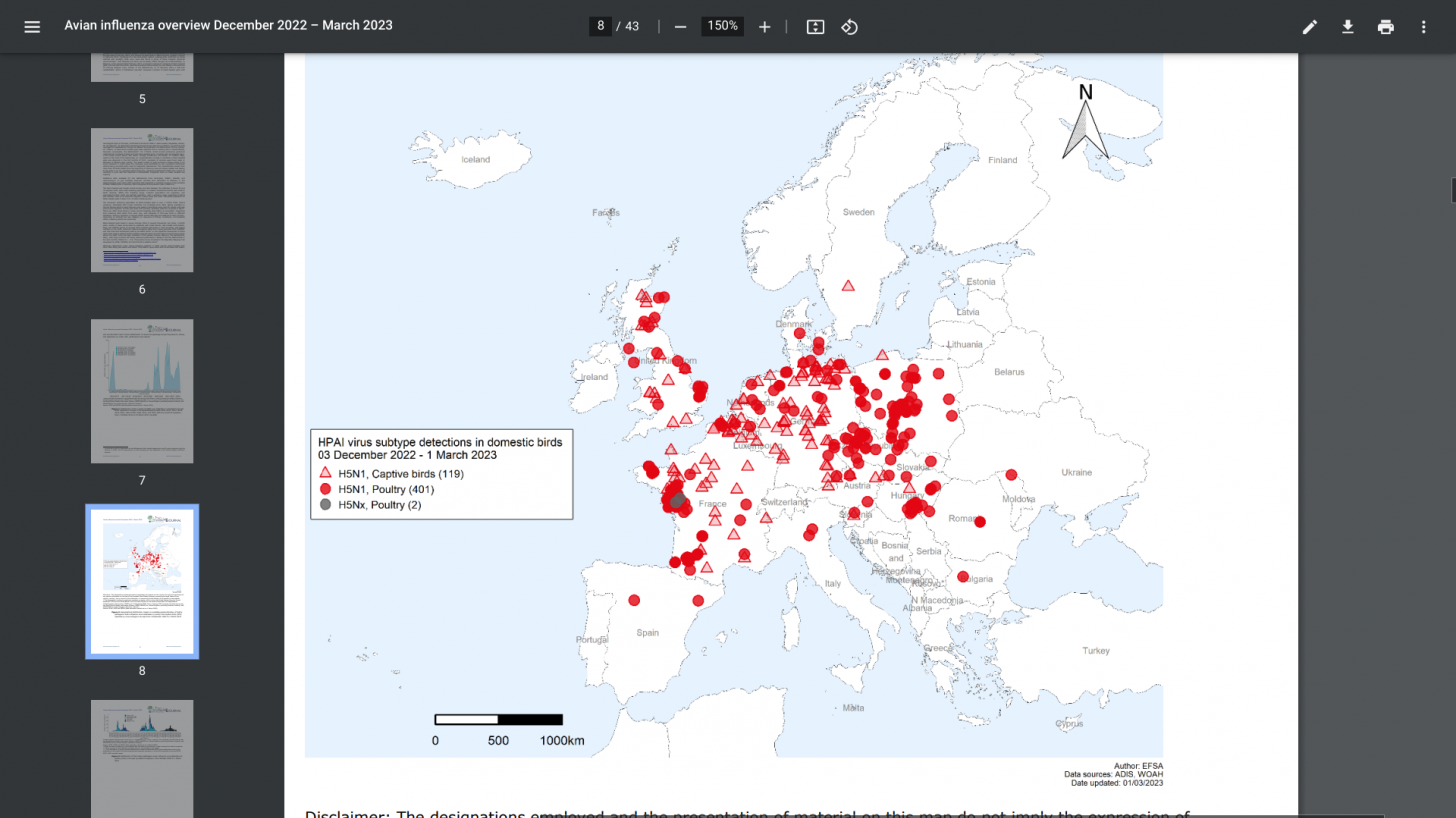
Since late 2021, a global shift has occurred in the ecology of highly pathogenic avian influenza (HPAI) of the H5 subtype. The continual spread of H5 HPAI (bird flu) is cause for concern, given the high mortality in birds, mammals, and some humans.
'Because past influenza pandemics originated from animal reservoirs, we argue that it is crucial to step up actions both to prevent H5 HPAI from becoming a future pandemic,' wrote Marion P G Koopmans. Viroscience Department, Erasmus University Medical Centre, Netherlands and colleagues in The Lancet Infectious Diseases on March 7, 2023.
To visualize the current impact across Europe, the European Food Safety Agency, the European Centre for Disease Prevention and Control (ECDC), and the European Union published an assessment of bird flu data collected from December 2022 to March 1, 2023.
This analysis found HAPI clade 2.3.4.4b was reported in domestic (522) and wild (1,138) birds in 24 countries.
An unexpected number of HPAI virus detections in sea birds were observed, mainly in gull species, particularly in black-headed gulls in France, Belgium, the Netherlands, and Italy.
The close genetic relationship among viruses collected from black-headed gulls suggests a southward spread of the HAPI virus.
Moreover, the genetic analyses indicate that the virus persisted in Europe in residential wild birds during and after the summer months.
And might increase during the coming months as breeding bird colonies move inland with possible overlap with poultry production areas.
Worldwide, the bird flu virus continued to spread southward in the Americas, from Mexico to southern Chile.
The Peruvian pelican was the most frequently reported infected species, with thousands of deaths reported.
The reporting of bird flu in mammals (sea lions) also continued, probably linked to feeding on infected wild birds.
Since October 2022, six A(H5N1) detections in humans were reported from Cambodia (a family cluster with two people, clade 2.3.2.1c), China (2, clade 2.3.4.4b), Ecuador (1, clade 2.3.4.4b), and Vietnam (1, clade 2.3.4.4b), as well as two A(H5N6) human infections from China.
This 43-page ECDC report says the risk of bird flu infection in Europe is assessed as low for the general population and low to moderate for occupationally or otherwise exposed people.
However, the number of mammals infected with A(H5N1) viruses and the detection of viruses carrying markers for mammalian adaptation in other genes, such as the PB2 that correlated with increased replication and virulence in mammals in Canada, South America, and the U.S. is of concern for humans.
Currently, the U.S. Food and Drug Administration, and other agencies, have approved bird flu vaccines for people.
In the U.S., the Audenza™ vaccine was approved in 2020 and would become available during an outbreak.
Furthermore, the U.S. government has funded initiatives to develop new bird flu vaccines.
Our Trust Standards: Medical Advisory Committee







